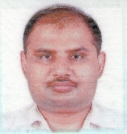报告题目:Axion-like particle and dark matter searches at BESIII
报告人:Vindhyawasini Prasad, 智利塔拉帕卡大学博士后
报告时间: 2023年12月13日 14:00
报告地点: 伟德BETVlCTOR1946中心校区物理楼302会议室
报告摘要
The Standard Model of Particle Physics describes ordinary matter well but fails to accommodate dark matter. Dark matter (DM) is a new type of proposed matter to explain the observed rotation curves of galaxies and the total matter density of the universe. Its effect is so far inferred via gravitational effects only. DM may couple to ordinary matter via portals, which could be a dark photon, a light Higgs boson, an axion-like particle, or a spin-1/2 fermion. The dark photon can be accessed via the initial-state-radiation process, while the axion-like particle and light Higgs boson can be accessed via the radiative decays of J/psi mesons using the data of high-intensity electron-positron collider experiments, such as the BESIII experiment located at IHEP, Beijing, China. DM may be depicted as an invisible final state of baryonic matter. A massless dark photon, predicted by the spontaneous broken of the Abelian group U(1)D, may enhance the branching fractions of rare flavor-changing neutral current processes. BESIII has recently explored the possibility of these kinds of DM scenarios using the data samples collected at several energy points, including J/psi, psi(3686) and psi(3770) resonances. This talk will summarize the recent results of the BESIII experiment related to dark matter and axion-like particle searches.
报告人简介

Vindhyawasini Prasad,印度人,2013年,在印度古瓦哈蒂理工学院物理系获得高能粒子物理实验系博士学位,2013年7月-2015年8月,2016年5月-2019年9月,相继在在中国科学院高能物理研究所、中国技术科技大学做博士后研究。2019年10月-2021年9月,在中国科学技术大学做副研究员,2021年10月-现在,在智利塔拉帕卡大学做博士后研究。2017年5月,获得中国科学院颁发的赵忠尧奖学金,2019年,获得CAS PIFI博士后研究金。曾在国际学术会议上多次做报告,曾获得国家自然科学基金的国际科学家研究基金和第64批博士后科学基金资助项目。
举办单位:
bv伟德国际体育
伟德BETVlCTOR1946理论物理中心